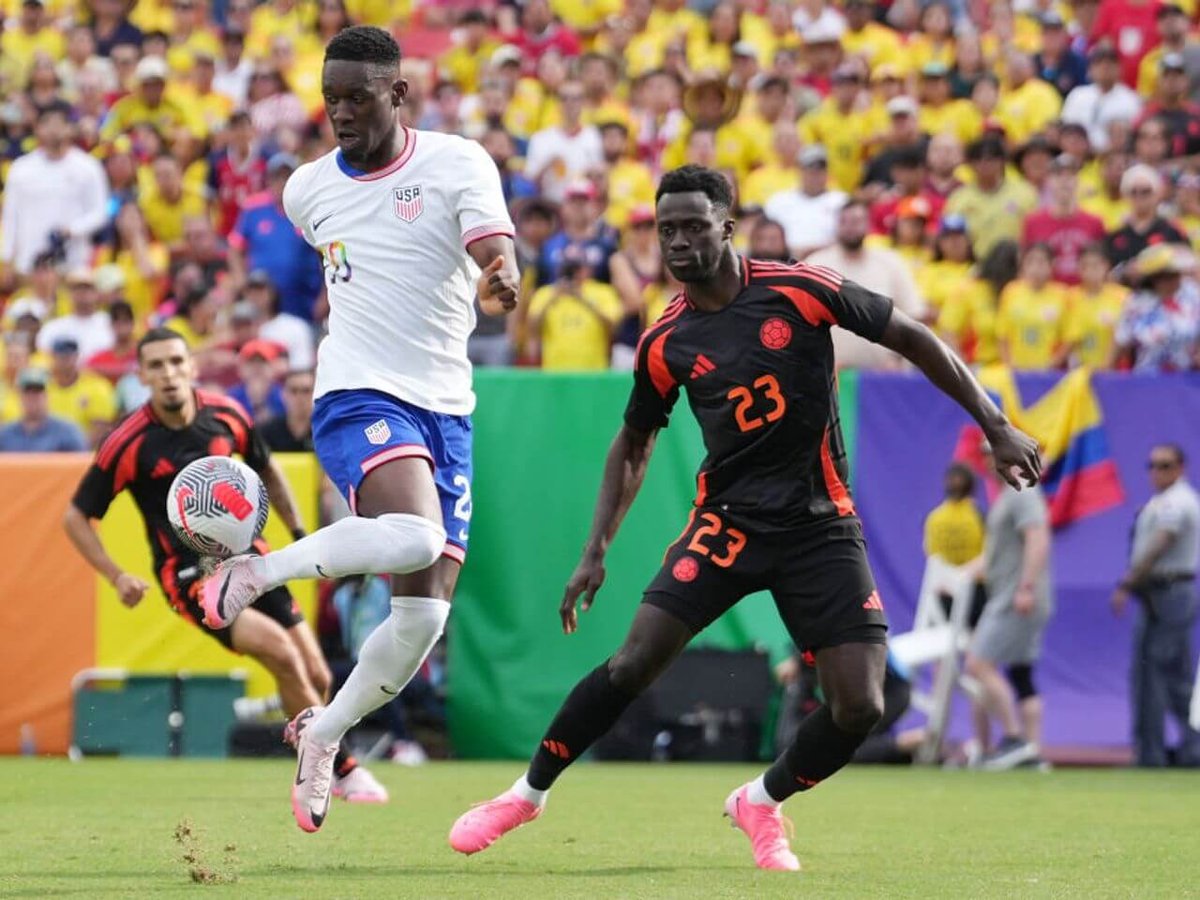Opinion Piece: A Missed Opportunity for U.S. Soccer in the USMNT vs. Colombia Match
Photo Credit: Getty Images
Last summer’s Copa America tournament hosted in the United States for the first time was a grand spectacle, showcasing some of the finest soccer talent from across the Americas. Yet, amidst the thrilling matches and vibrant fan celebrations, a significant opportunity was overlooked. The US Men’s National Team’s (USMNT) performance, which was kicked off with a humbling Friendly match 1-5 loss to Colombia at FedEx Field in Prince George’s County in Landover, Maryland, was not just a low point on the field but also a broader failure in engaging the American sports fan and the untapped soccer enthusiasts across the nation.
A Tale of Two Fanbases
From the onset, it was clear that the majority of the fans were there to support Colombia. The stadium, a sea of yellow, blue, and red, pulsated with the energy and passion of Colombian supporters. Their fervor and enthusiasm created an electrifying atmosphere, underscoring the deep love for soccer within the Colombian community.
In stark contrast, the representation for the USMNT was noticeably sparse. The lack of a strong American fan presence, particularly from the African American community, was glaring. This absence was not just a missed chance for support but a missed opportunity for US Soccer to connect with and engage a crucial demographic that remains underrepresented in the sport’s fanbase.
The Diversity Disconnect
Soccer in the United States has long struggled with inclusivity and diversity, both on the field and in the stands. The USMNT roster for this match featured a number of talented Black players, showcasing the diversity within the team. Yet, the lack of African American fans in attendance highlighted a significant disconnect.
Prince George’s County, known for its substantial African American population, could have been a fertile ground for fostering greater community involvement in soccer. The sport has immense potential to bridge gaps and unite diverse groups, but this potential remains untapped when efforts to engage key demographics are insufficient.
Missed Engagement Opportunities
US Soccer’s marketing and outreach efforts need a critical reevaluation. The organization has the resources and platforms to build bridges with communities that have historically been sidelined in the soccer landscape. Events like this match should be leveraged as strategic opportunities to reach out to African American communities, promoting the sport and encouraging participation at all levels.
The lopsided result of the game was disappointing, but the real loss was the missed opportunity to foster a more inclusive and representative soccer culture in the United States. As the sport continues to grow in popularity, it is imperative for US Soccer to prioritize diversity and inclusivity in its outreach efforts.
By actively engaging with African American communities, US Soccer can cultivate a broader and more passionate fanbase, enriching the sport with a diversity of voices and experiences. This engagement is not just beneficial for the sport’s growth but is essential for its future in a multicultural nation.
In conclusion, the USMNT vs. Colombia match should serve as a wake-up call. The energy and passion of the Colombian supporters were commendable, but the absence of a significant African American presence was a stark reminder of the work that still needs to be done. US Soccer must seize future opportunities to bridge these gaps, ensuring that the beautiful game is truly for everyone.
The End

